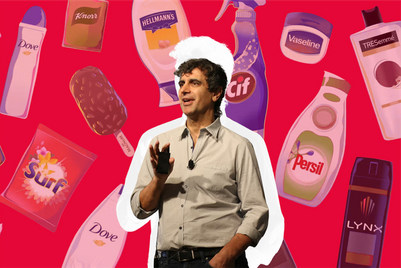
With one of the world’s fastest growing economies, a burgeoning digital infrastructure and a thriving community of social media creators, Laos People's Democratic Republic presents a rare opportunity for brands to enter the market early, dominate a category and capitalise on the country’s untapped creativity.
But as one of the world's few remaining communist states and one of East Asia's poorest countries, it presents a risky and complex investment.
Fast growing economy, but still reliant on aid
With 7.1 million inhabitants, Laos has one of the smallest populations in Southeast Asia, besides Singapore, East Timor/Timor-Leste and Brunei.
Less than one-third (29%) of the adult population has a bank account, a nominal 0.6% has a credit card, and 7.1% of the population make online purchases, according to World Bank global financial inclusion data.
Paying for things online is difficult as it is mostly reliant on bank account transfers rather than e-wallets on payment methods like Paypal. Alibaba deployed its mobile payments platform Alipay into various merchants in Laos last year, but the rollout targets Chinese tourists who visit Laos rather than its residents.
Laos has a low urban concentration (35%) since most Laotians live in rural areas, with around 80% working in agriculture mostly growing rice. Accordingly, Laos is a low-middle income country.
Laos also has the challenge of being the only land-locked country in Southeast Asia. The Lao government has been trying to turn this into an advantage, by promoting the country as a land bridge for its neighbours. The China-Laos Railway project, which is due for completion in December 2021, is one of the biggest projects aimed at growing the country’s connectivity.
In 2016 the Lao government teamed up with Microsoft to advance the adoption of emerging technologies for sustainable economic development, with a focus on projects with social impact. As well as providing access to tools to grow the digital economy, a big part of the partnership is focused on improving the digital literacy of educators and the general public.
Government initiatives to grow Laos’ economy have bore fruit over the last few decades. The government, one of the few remaining one-party communist states, opened its market to the outside world in 1986. Economic growth averaged more than 6% per year in the period 1988-2008, and Laos' growth has more recently been amongst the fastest in Asia, averaging more than 7% per year for most of the last decade.
*Singapore and Brunei did not receive any official development aid (ODA) in this period
However, Laos’ GDP annual growth rate has been in decline since 2012, when it peaked at 8.3%. The economy is expected to remain stable over the next two years, but not to grow. Asian Development Outlook (ADO) 2019 forecasts Lao PDR’s gross domestic product (GDP) growth to remain at 6.5% in both 2019 and 2020.
Source: tradingeconomics.com
Furthermore, while a whole cohort of around 20 malls have popped up around the capital city Vientiane since 2016 to attract foreign brands and investment, some remain unfinished and many don’t offer a huge array of high-quality products, so locals still prefer to travel across the border to Thailand for shopping.
The country's development continues to be impacted by unexploded bombs from the Vietnam War. The US dropped two million tons of bombs on Laos during the 1960s and 70s, making it the most heavily bombed country in history relative to the size of its population. While 20 million unexploded bombs have reportedly been cleared so far, at the current rate of progress, making Laos completely safe again will take 200 years.
Taking into account all these factors, Laos may not be the first place international brands look for consumer growth.
On the flipside, it presents an opportunity for brands to enter the market without much competition, and build loyalty with Laotian consumers before it becomes tapped.
“Laos being in the nascent stage has a lot of opportunities for new brands,” says Srikanth Srinivasamadhavan, Unilever’s vice president for Myanmar, Cambodia and Laos. “With the digital leap frogging and consumer development it is likely that nascent markets like these will more and more start looking like more developed markets. This is a great opportunity for brands to grow especially through the digital segment.”
Srinivasamadhavan notes the food and beverages category as a “particularly big opportunity” in Laos.
Strict media control means Laotians are using social media for creative expression
Laos has one of the most restrictive media environments in the world. In 2016, Reporters Without Borders ranked Laos 173 out of 179 on its annual Press Freedom Index, behind countries such as Cuba and Iran.
The Laotian government exerts almost total control over the press. The government owns all of the around 24 regularly printed newspapers, 32 television stations and 44 radio stations. There are strict rules around what journalists can report on — reporting news that “weakens the state” can land them up to a year in jail. Foreign journalists are not permitted to live in the country.
Heavy controls on Lao TV content have potentially stifled its creativity. Many Laotians turn to Thai TV content for entertainment, and local channels for news.
As a result, Laotians are turning to social media for entertainment, access to information, and to express themselves freely. Laotians enjoy comparatively uncontrolled access to the internet compared to China and Vietnam.
Laos has 2.7 million internet users and the equivalent number of active social media users. This represents 39% of the total population, so there’s plenty of room for growth.
Facebook is by far the most popular website in Laos. There were 2.2 million Facebook users in Laos in September last year, representing nearly a third (31%) of the population. It is followed by YouTube which reportedly counts around 1.9 million monthly active users.
Radio Free Asia has the second most popular YouTube channel in Laos
Across both Facebook and YouTube, there’s a growing cohort of Lao creators, developing a combination of travel and beauty vlogs, comedy and sitcom-style programming.
“Where everything else is censored in Laos, young people are expressing their creative freedom on social media,” says a Laos business owner who wished to remain anonymous. “Revolutions come from places like Facebook.”
Laos channels do not currently have access to monetisation on YouTube, so many creators register their channels in Thailand or in the US. It is therefore difficult to trace the most popular creators in the country, but one of the most popular channels, Una Studio, has more than 630,000 subscribers.
Of the YouTube channels registered in Laos, Radio Free Asia, the nonprofit international broadcaster that provides news and information to Asian countries whose governments prohibit access to a free press, has the second most popular channel with 23,000 subscribers and 6 million video views, according to Socialbakers data.
Meanwhile, due to the high penetration of Facebook in the market, many businesses operate solely within the platform rather than having a website.
“In Laos we use Facebook the way that Facebook wants us to use it — as a common marketplace for everything,” the business owner said.
Advertising follows consumers online
The advertising industry in Laos is small, and since the government sets parameters on what ads should and should not include, there’s little creative risk in traditional forms of media, including radio, print, TV and outdoor advertising.
There are plenty of options with outdoor advertising, including road-side billboards, bus stops, markets and airport spots. But advertising space is expensive, so many billboards sit empty. International brands that used to take out regular spots, such as Knorr, are now nowhere to be seen, leaving a gap in the market.
Since nearly all Laotians who own TVs watch Thai advertisements, campaigns targeted at Thai consumers are likely to have a halo effect on Lao consumers.
|
How understanding the close Thai-Laos relationship can help advertisers interested in Laos The land-locked Kingdom of Laos shares a border and many similarities with the Kingdom of Thailand. Roughly a third of Thai people speak the Lao dialect Isan, and cross-border cooperation between the two countries has flourished since the end of the Cold War. Understanding the close relationship between the Laos and Thai people can provide a good starting point for advertisers interested in Laos. Many Laotians refer to their Thai neighbors endearingly as ‘big brothers’ and enthusiastically consume a wide range of Thai media, including comedy shows, soap operas and pop concerts. Thai content and ads are considered much more entertaining and well-developed than domestically produced content. Advertisers interested in Laos may find that there’s not much to change between Thai and Lao ads, other than dubbing the content into Isan. However, there are vast differences between the media landscapes in both countries. Bangkok is, for instance, one of the most advanced and dynamic cities in the world in terms of digital out-of-home (DOOH) advertising. You can find digital billboards and signage (DBB) almost everywhere throughout the city, from shopping malls to mass-transit stations, public spaces and even in universities. This is absolutely not the case in Laos, where DOOH is still very much in its infancy. Advertisers wanting to focus on Laos will have to adapt their media plan accordingly. |
As an alternative, brands, like Laotians, are finding more creative ways to advertise their products online.
Unilever, which has had formal distributive arrangements in Laos since 1993, has created several mini TV series and leveraged local influencers to market its products.
“We believe that Laos is well placed digitally especially with our younger consumers and we use digital and social media platforms to reach them,” says Srinivasamadhavan.
“The digital landscape is fast evolving. As the internet data consumption builds there will be a lot of opportunity not only for advertising but also for social and ecommerce in Laos. This digital journey in Laos has just now begun but we expect this growth to be really fast,” he adds.
The top brands on Facebook and YouTube in Laos are a mixture of telecommunications companies, auto brands, electronics brands and FMCG brands, according to Socialbakers data. Beerlao is the top brand on Facebook in Laos with more than 400,000 followers, while local producer Lao Art Media tops YouTube with 1,283 subscribers and 265,000 video views.
|
More for Campaign Members This article is part of an ongoing series running in August and September about some of Asia's less well-known markets. |


.jpg&h=334&w=500&q=100&v=20250320&c=1)
.jpg&h=334&w=500&q=100&v=20250320&c=1)

.jpg&h=334&w=500&q=100&v=20250320&c=1)
.png&h=334&w=500&q=100&v=20250320&c=1)
.png&h=334&w=500&q=100&v=20250320&c=1)











.png&h=268&w=401&q=100&v=20250320&c=1)